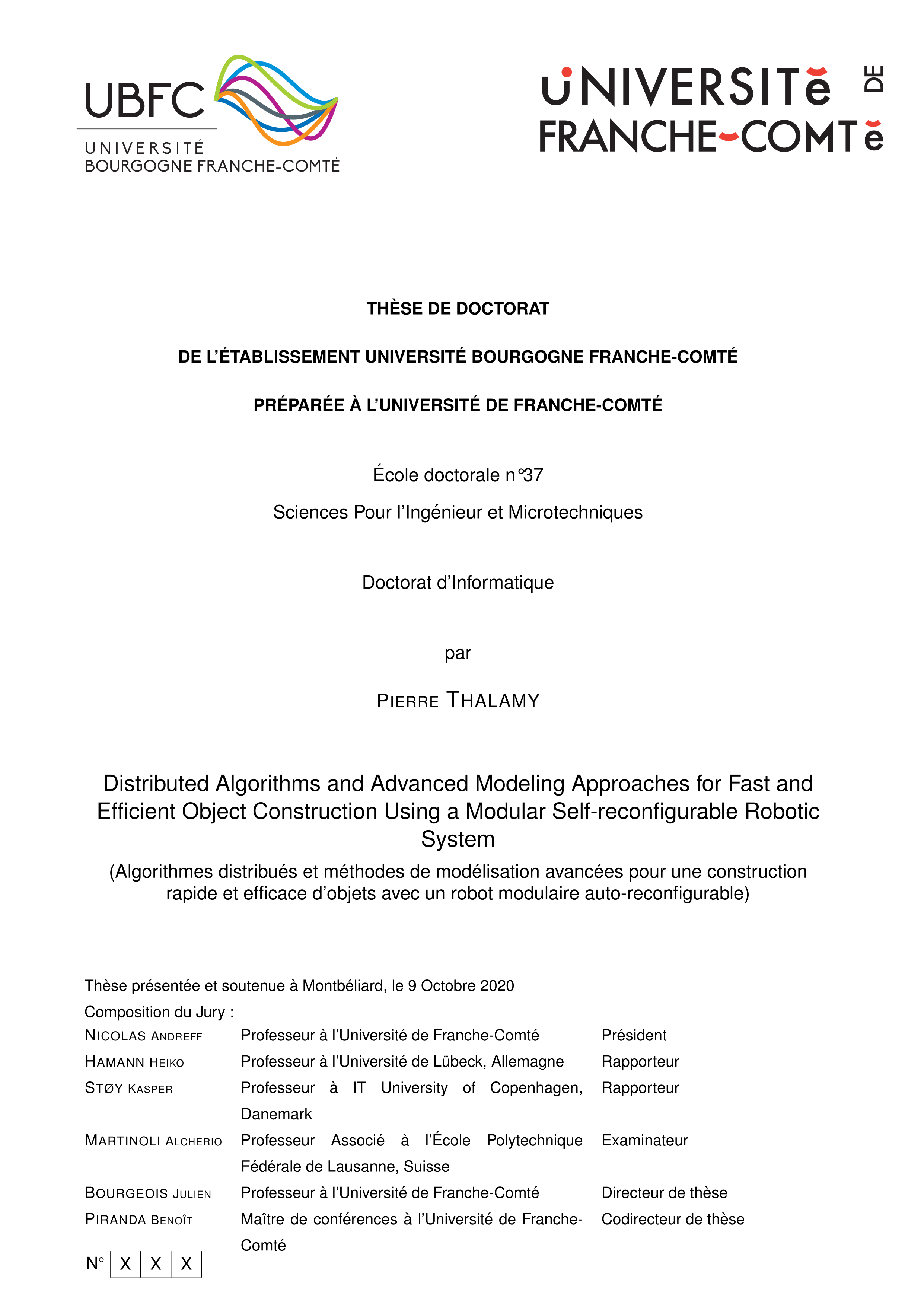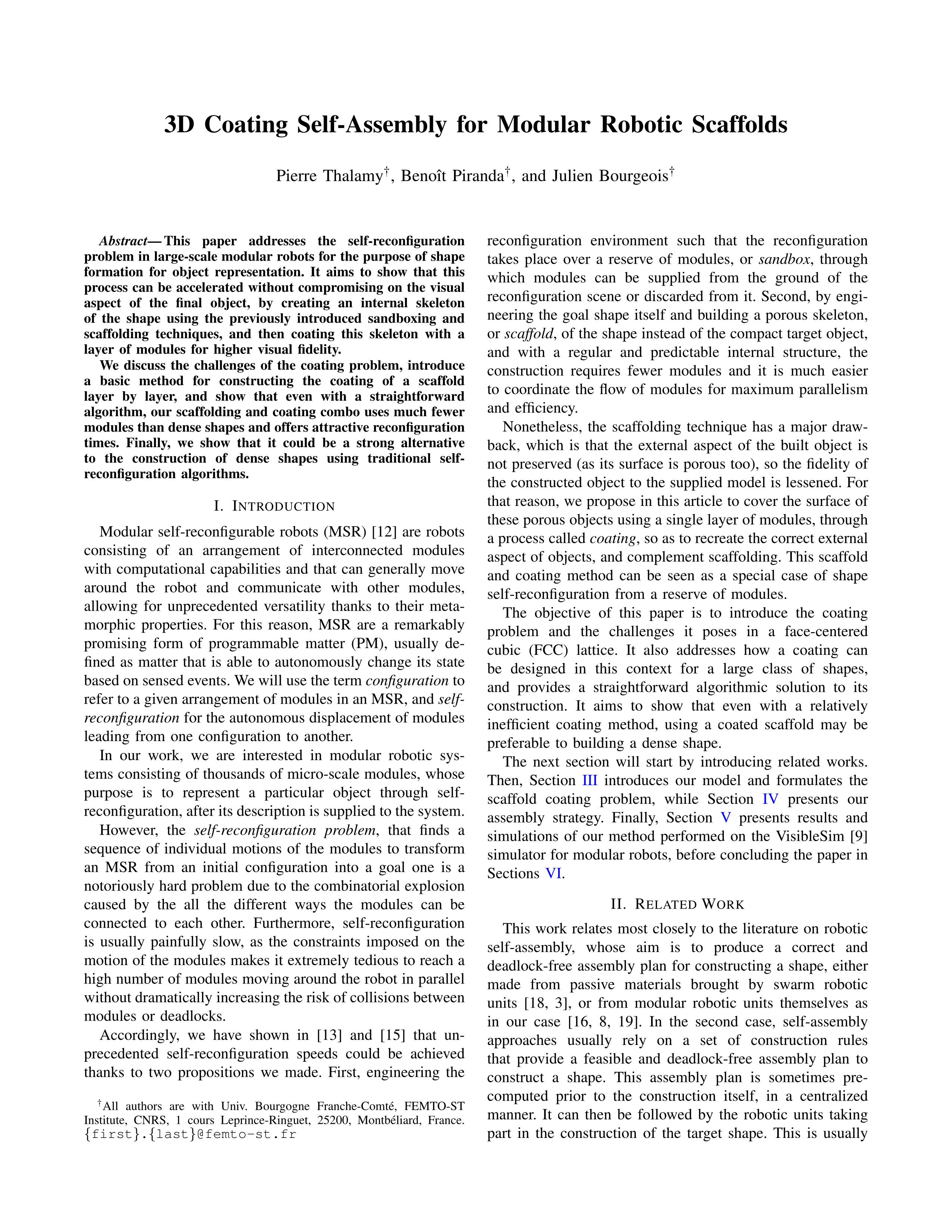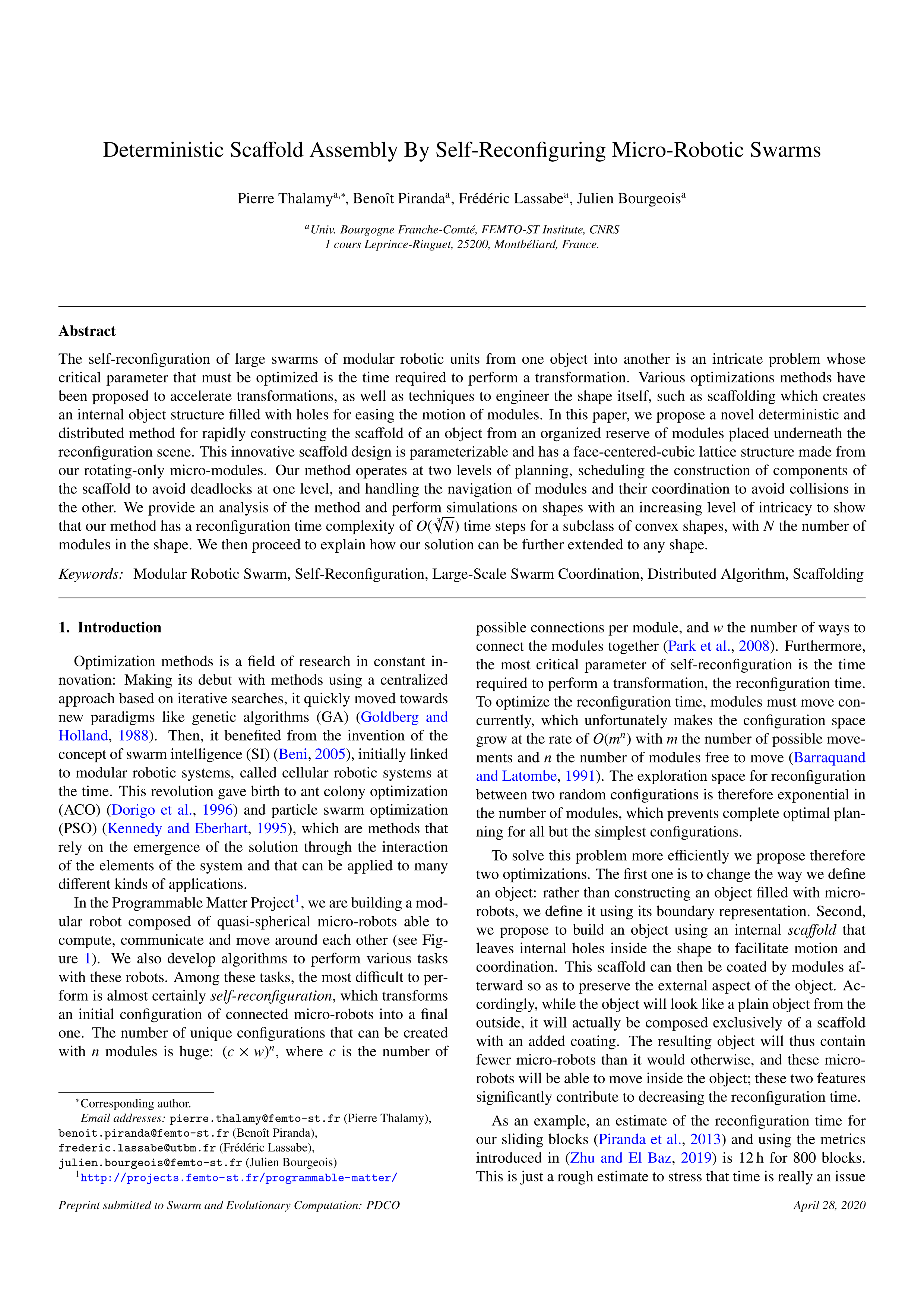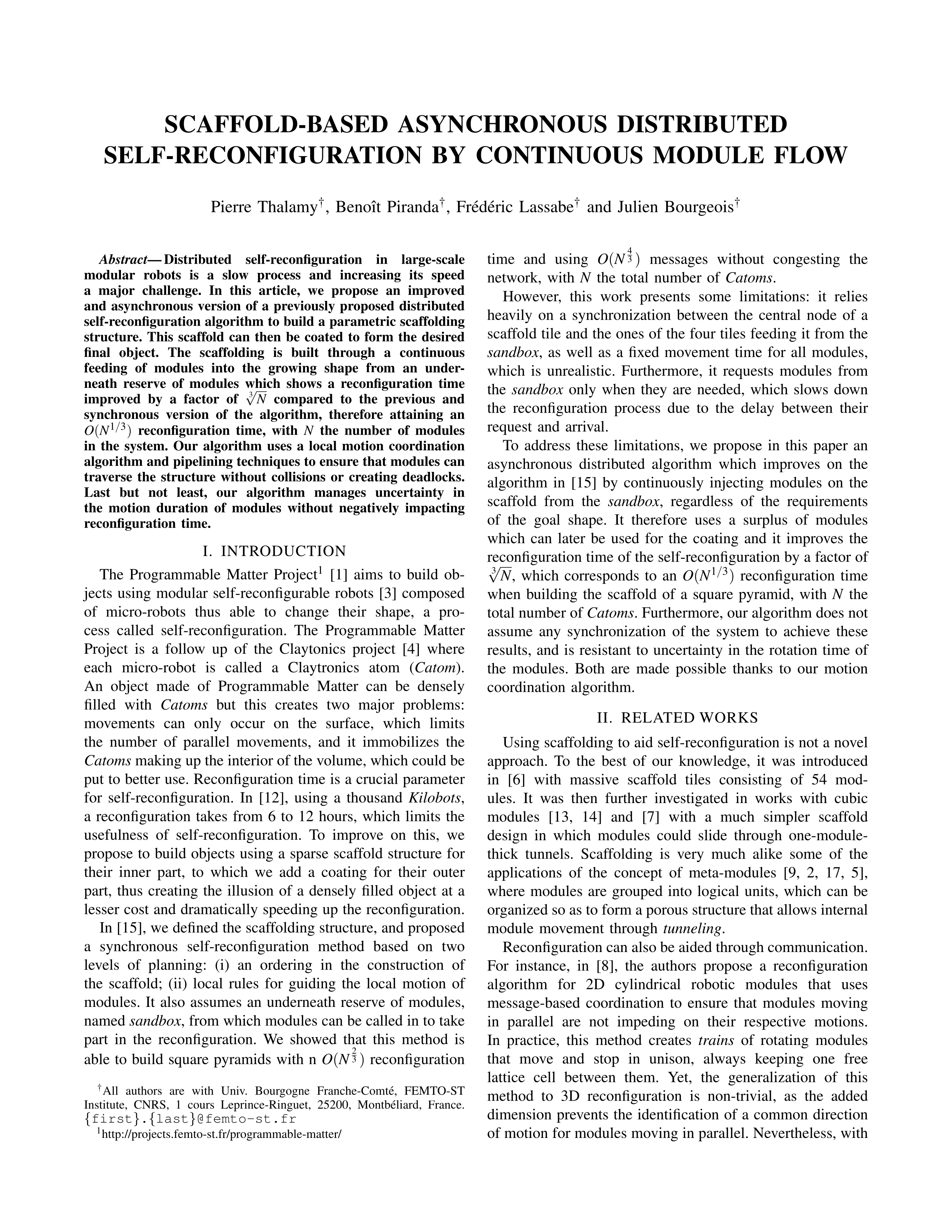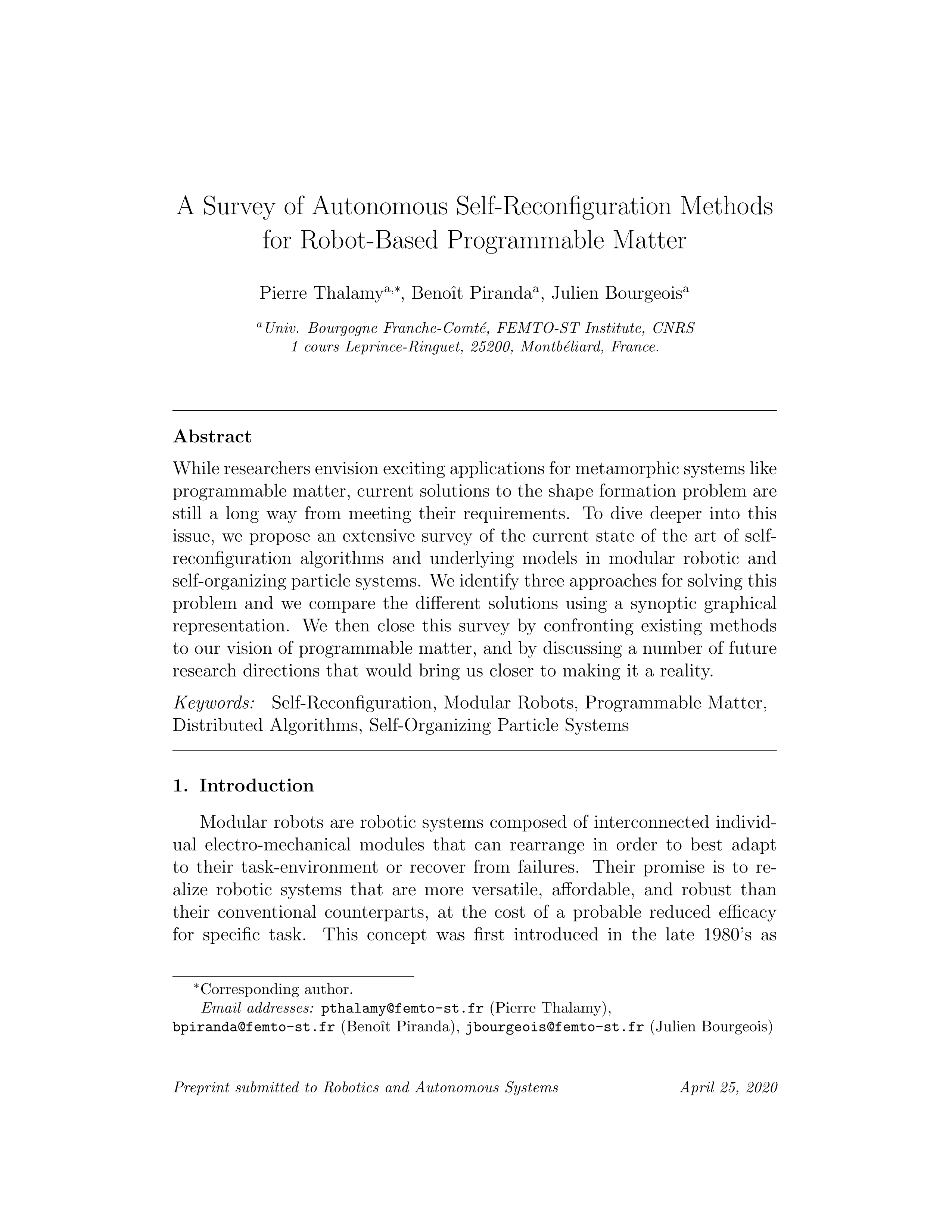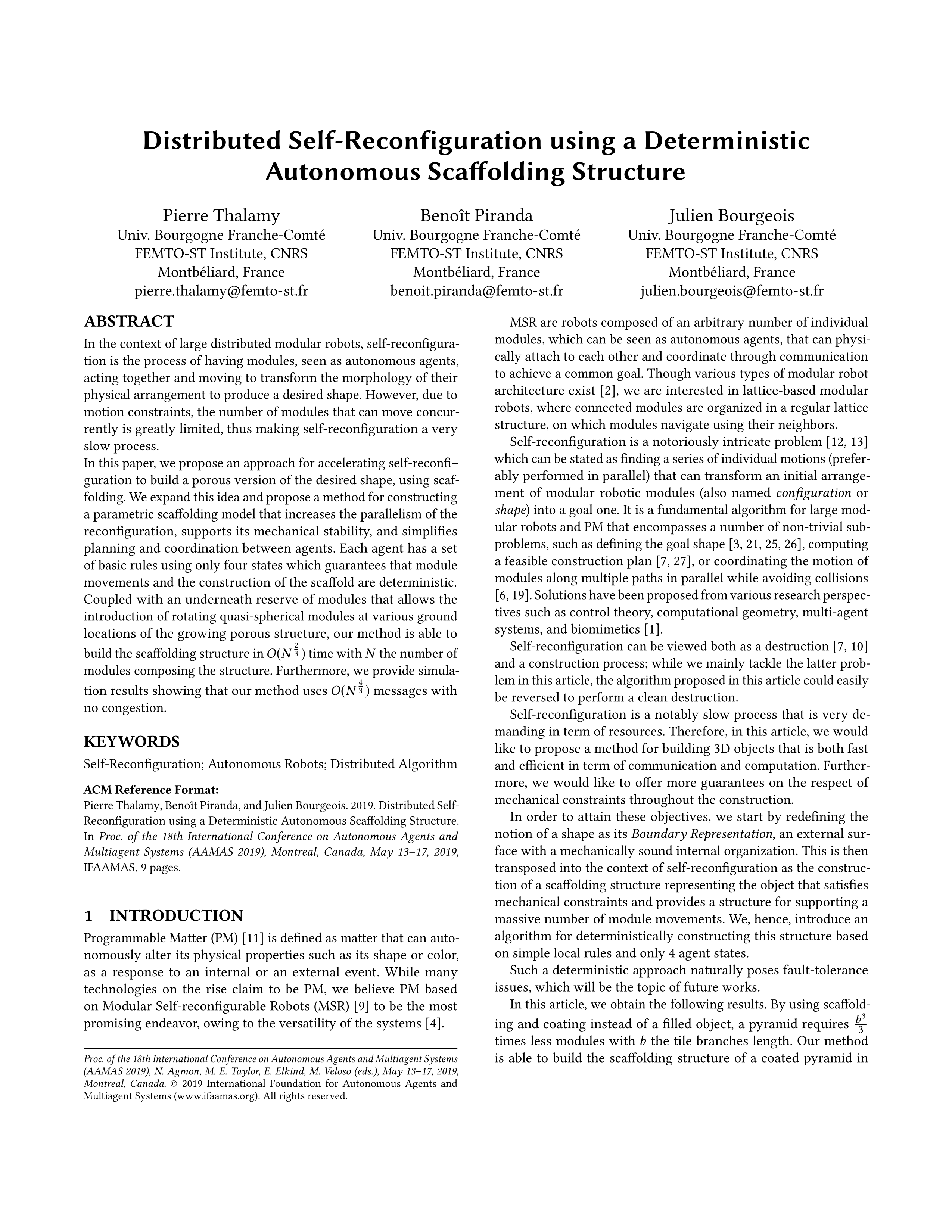Citation (BibTex)
@phdthesis{thalamy_distributed_2020,
address = {Montbéliard, France},
type = {{PhD} {Thesis}},
title = {Distributed {Algorithms} and {Advanced} {Modeling} {Approaches} for {Fast} and {Efficient} {Object} {Construction} {Using} a {Modular} {Self}-reconfigurable {Robotic} {System}},
language = {en},
school = {University of Bourgogne Franche-Comté},
author = {Thalamy, Pierre},
month = oct,
year = {2020}
}
